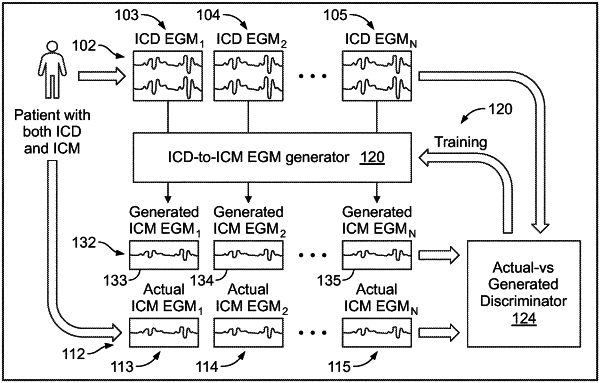| CPC A61B 5/363 (2021.01) [A61B 5/0006 (2013.01); A61B 5/283 (2021.01); A61B 5/352 (2021.01); A61B 5/353 (2021.01); A61B 5/358 (2021.01); A61B 5/366 (2021.01); A61B 5/389 (2021.01); A61B 5/686 (2013.01); A61B 5/7267 (2013.01); A61B 5/7275 (2013.01); A61B 5/746 (2013.01)] | 22 Claims |

|
1. A system for determining an arrhythmia risk, comprising:
memory to store specific executable instructions and a machine learning (ML) model trained to predict an arrhythmia with a characteristic of interest (COI) that exhibits a non-physiologic behavior, the ML model trained based on pseudo cardiac activity (CA) signals, the pseudo CA signals generated by a pseudo signal generator (SG) model based on actual first CA signals;
one or more processors configured to execute the specific executable instructions to:
obtain second CA signals collected by an implantable medical device (IMD), wherein the COI, in the second CA signals collected, exhibits a physiologic behavior; and
apply the ML model to the second CA signals to identify a risk factor that a patient will experience the arrhythmia at a future point in time even though the COI from the second CA signals, exhibits the physiologic behavior.
|